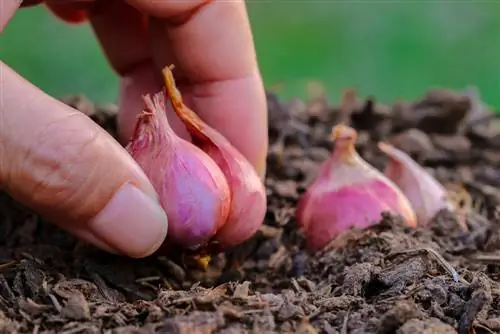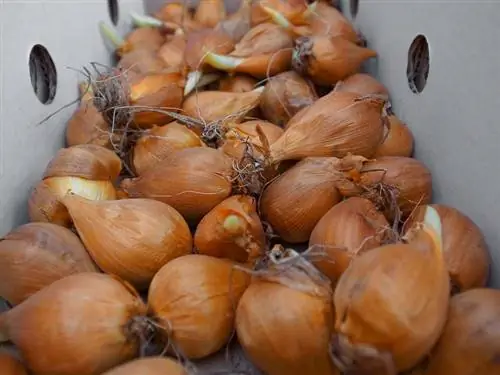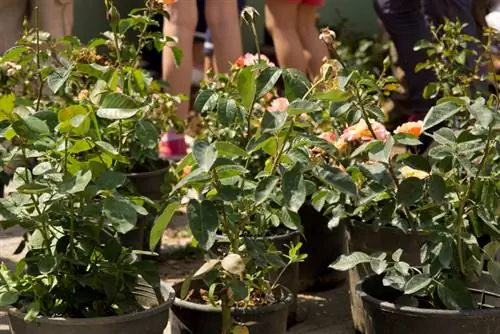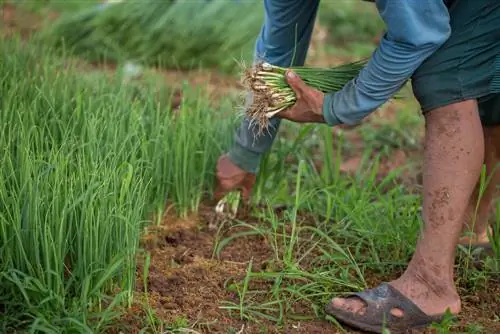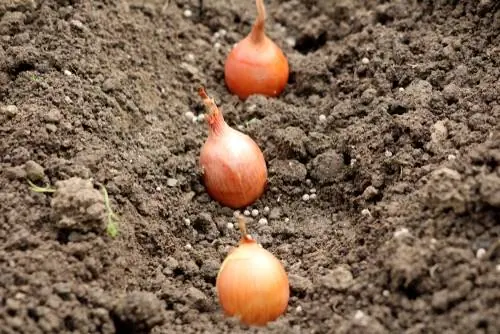- Author admin [email protected].
- Public 2024-01-10 23:11.
- Last modified 2025-01-23 11:21.
If you are interested in growing onions in your own garden, you will find that there are many different varieties of onions that differ in color, size and taste. If you want a mild, aromatic and decorative variety, you should plant red onions.
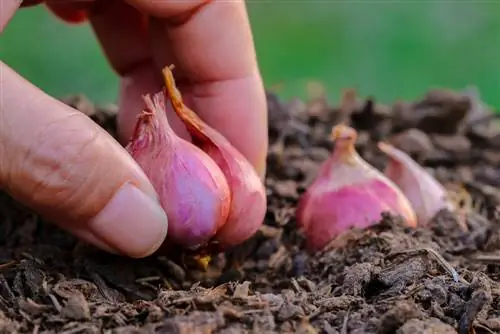
How to plant red onions in the garden?
To plant red onions, first prepare loose, sandy soil and incorporate mature compost or potassium-containing fertilizer. Then, from the end of March, plant onion sets in rows 10-15 cm apart in the soil and care for them regularly by removing weeds and carefully loosening the soil.
The peculiarity of the red onion
In addition to many vitamins, the red onion has twice as many antioxidants as the conventional yellow varieties. Together with the other ingredients, it strengthens the immune system, bones and nerves. It tastes slightly sweet, but also has a mild spiciness. Externally, it immediately stands out due to its red to dark purple, shiny shell and its relatively thin skin.
Planting red onions correctly
Just like the traditional yellow onion, the red onion can also be easily cultivated in the garden. Good preparation will pay off later with a good harvest.
Preparing the soil
Well-loosened, sandy soil that is not too wet is the basic requirement for cultivation. Fresh manure should also not be applied because the onions cannot tolerate too much nitrogen. Before sowing the onions, however, you can incorporate some mature compost (€12.00 on Amazon). If you don't have compost to hand, you can also use a fertilizer containing potassium.
Planting the red onion sets
The onion sets can go into the bed from the end of March, when the temperatures become a little milder. In neat rows, stick an onion two-thirds into the ground about every 10 to 15 cm. To ensure that the rows remain straight, you can use a stretched planting cord that is offset by approximately 30 cm row by row. Another aid is the plant stick. You use it to pre-drill the planting hole and then you can easily place the bulb in the soil and then press it down a little.
Caring for red onion sets
Once all the onion sets are in the ground, carefully water them once. Further watering is not necessary, even in dry weather. In hot summers, a layer of mulch placed between the bulbs can retain moisture and prevent the soil from drying out too much.
A mulch made from fern or sage also prevents onion flies from settling and their larvae from eating the young onion bulbs. During the growth phase of the onions, the bed must be regularly cleared of weeds and the soil should be loosened slightly.

